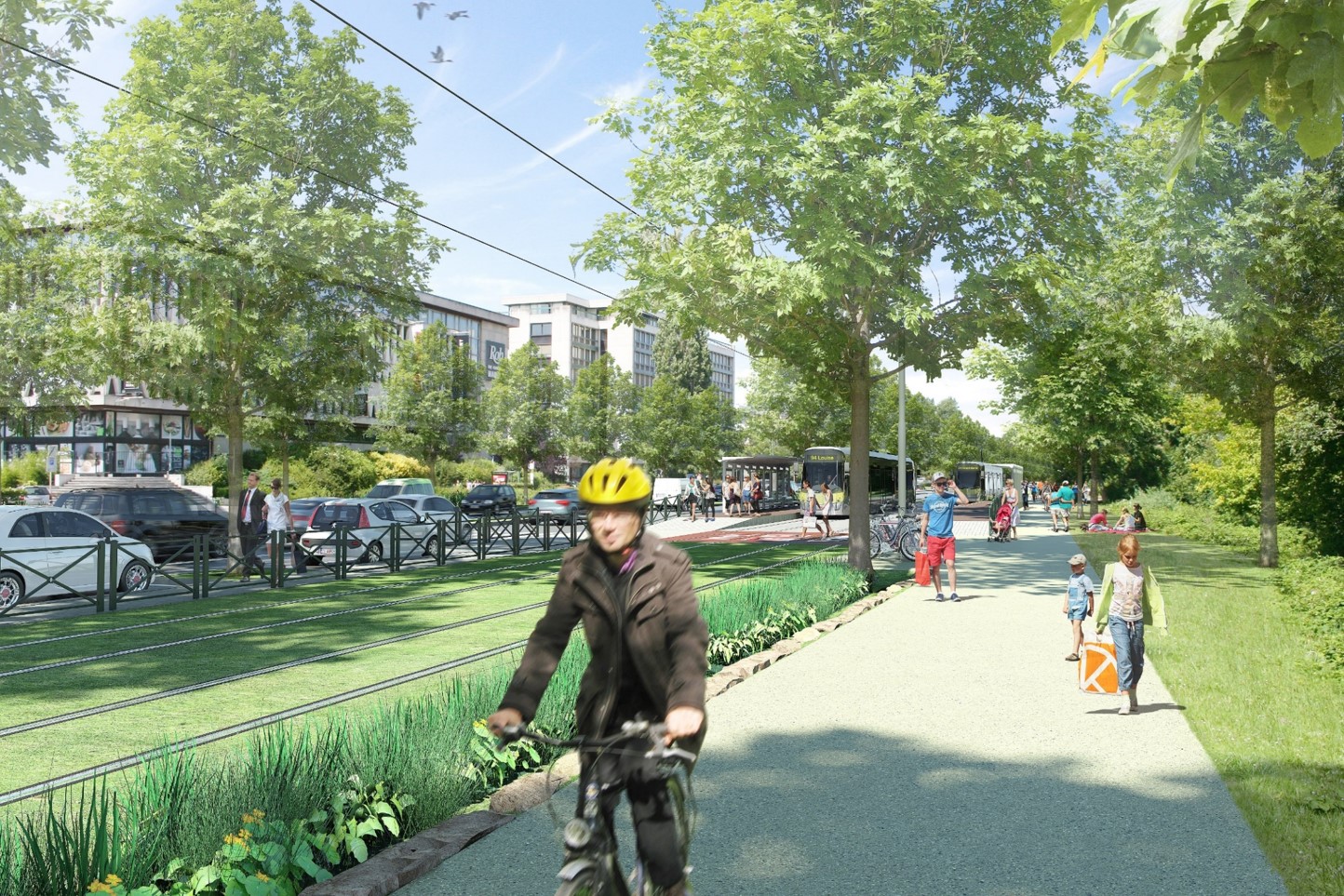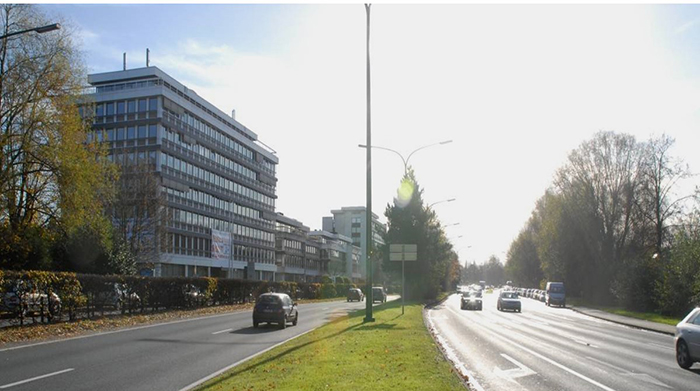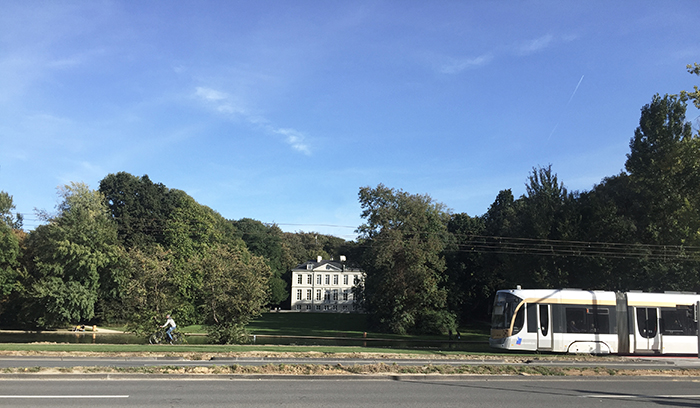Case Study
Boulevard de la Woluwe : from a metropolitan road to a parkway. Learnings from a pioneering project
Contact name
Roselyne de Lestrange
Institution name
Bruxelles Environnement
Region & country
Belgique
Summary
Transformation of a technical command into a multifunctional landscape project.
Redevelopment of the urban highway along the Woluwe valley into a parkway:
– implementation of a tram with grassed lanes, bicycle paths and promenades
– reinforcement of a metropolitan green and blue infrastructure by
o the setting up of an integrated rainwater management system,
o the development of an extensively managed tree and planted mall,
o the integration of a landscaped edge along the N2000 parks that border the river.
One of the first experiences of integrating nature based solutions for water management in a major roadway, the project has contributed, even with its fragility, to a new culture of nature-oriented public works projects

the new Woluwe Boulevard – rendering
SumProject

Projected section
SumProject

The boulevard before completion

The boulevard after completion
Livia de Bethune
Background of the project
The boulevard is bordered on one side by large facilities (schools, cultural centre, shopping…) and on the other by the Woluwe River and a series of parks partly Natura 2000.
It is a typical 1970s urban motorway, over-dimensioned and heavily trafficked, with vulnerability to flooding, noise, visual and air pollution, unsafety for users. Cyclists pass along the river, putting pressure on this natural area whose biological state is degraded
The designers commissioned for the extension of a tram line decide to connect the project to the ongoing restauration of the Woluwe river banks. They found it necessary to transform the motorway into a parkway in order to reinforce the existing ecological and landscape continuity, to manage vulnerability to flooding and to transform the road from an infrastructure mainly allocated to the car towards a multi-use public space with a new balance between the different users including non-human.
Solution and actions taken
In accordance with the mobility administration, it has been decided, in addition to the development of the tram and the reinforcement of intermodality, to limit car traffic speed, to set up infrastructures for soft mobility, to enhance the public space, and above all to reinforce the boulevard as an element of the regional green and blue network by enhancing its connexion to the banks of the Woluwe, planting the whole boulevard and integrating alternative rainwater management.
Planting of trees (Quercus cerris, Fraxinus excelsior) integrated into ponds with a buffering system;
Development of extensively managed vegetated areas
Implementtion of the tram with grassed lanes
Creation of wadi’s collecting the rainwater of the roads
Creation of a large cycle path along the tram,
Reduction of the space dedicated to cars (lanes and parking)
Reduction of the speed limit
Safe pedestrian crossings
Requalification of the front squares of the schools
Other institutions or parties involved
Brussels Mobility ( funding); STIB (public transport company, funding and realisation of the tramway); Brussels Environment (Blue infrastructure project); SumProject – Sweco and Livia de Béthune, design; Eole landscape office in charge of the restoration of the river and its surroundings; local municipalities of Woluwe St Pierre and Woluwe St Lambert; residents’ associations; Woluwe Shopping Center
Results
The actions of Environment Brussels on the river banks improved the ecological condition of the river and of the Natural 2000 parks ecotone.
The works on the Boulevard :
Increased the canopy;
Reduced vulnerability to flooding (also thanks to upstream and downstream infrastructural works)
Reactivated local use
Calmed the traffic
Increased pedestrian comfort and safety, with an additional mesh for cyclists and public transport
Transformation of offices into housing and great increase of bikers
Challenges
The top-down process did not allow a more radically green project.
The STIB’s need for commercial speed prevented the tram line from being located along the schools.
A major difficulty was related to stormwater alternative management. The executors lacked technical knowledge and confidence in the effectiveness of such techniques. Therefore some works were not carried out correctly. As a result their functionality is reduced.
Lessons learned
Installing a better technical knowledge of water management NBS would have required an initial investment of time and more in-depth monitoring of the work. But it would have allowed savings in both implementation and management.
Nevertheless, this pilot experience has enabled the governance method of these multifunctional projects between mobility, public space and nature to evolve. A new integrated project culture is being forged.
Other resources
-
Complete and detailed case study of the Woluwe Boulevard
http://www.europarc.org/wp-content/uploads/2021/11/env-brussels-case-study-Woluwe-Bd-detail.pdf
Contact name
Roselyne de Lestrange
Institution name
Bruxelles Environnement